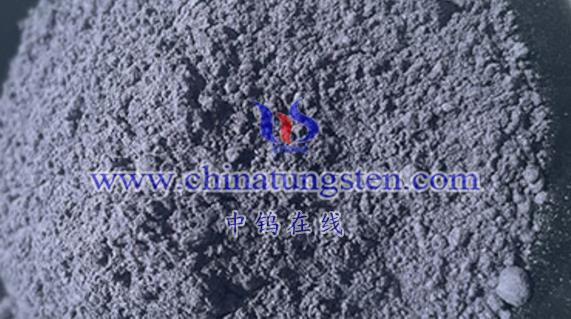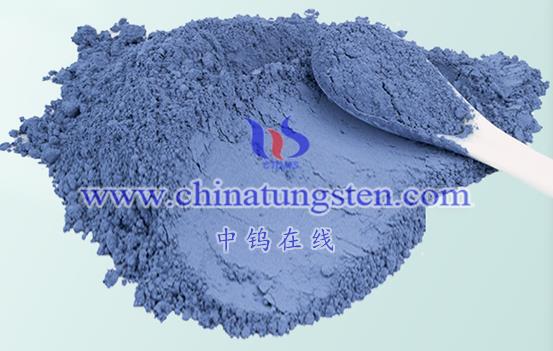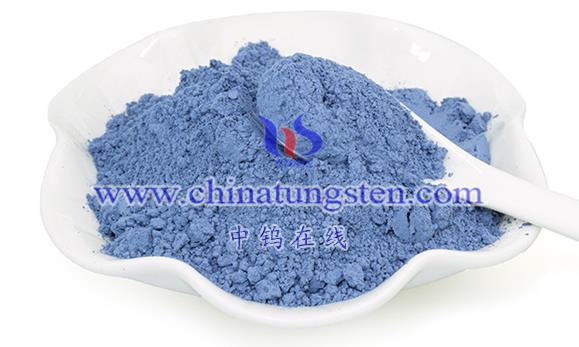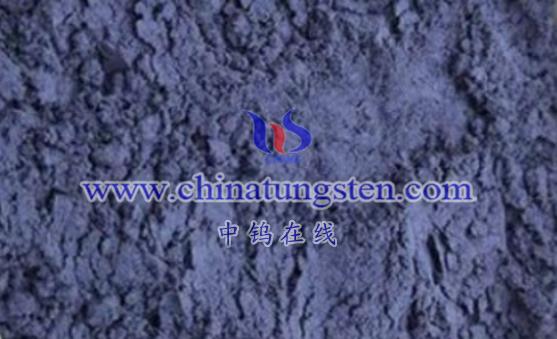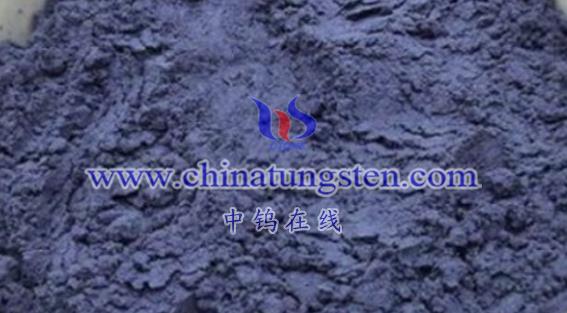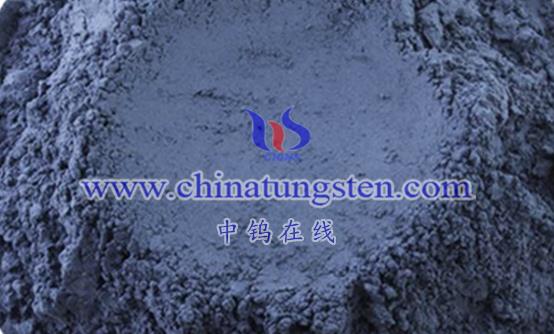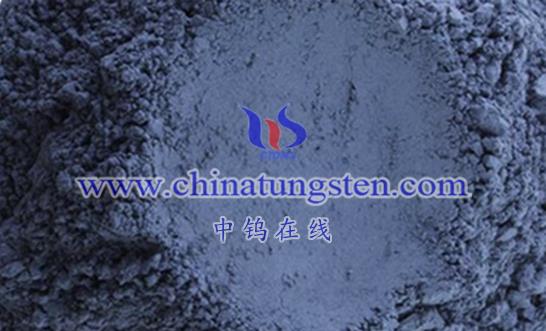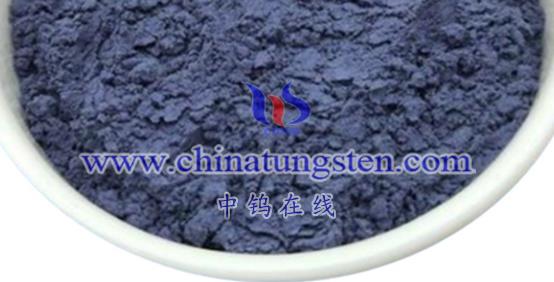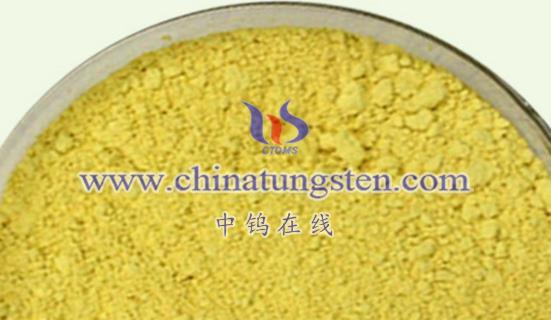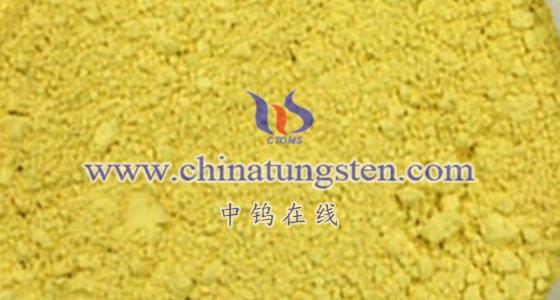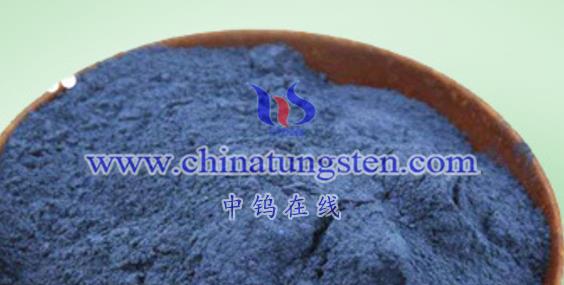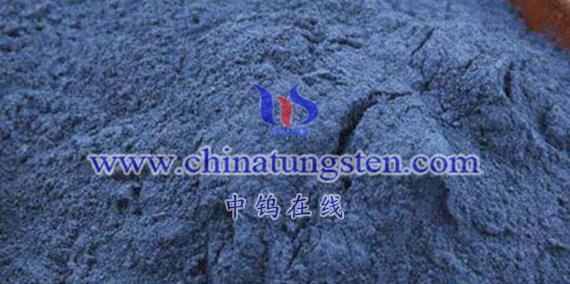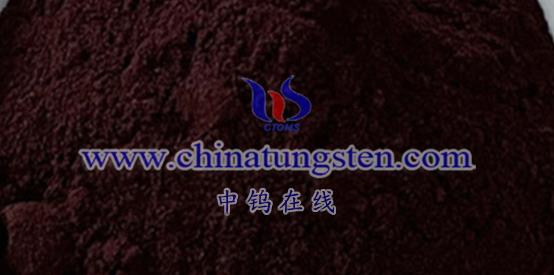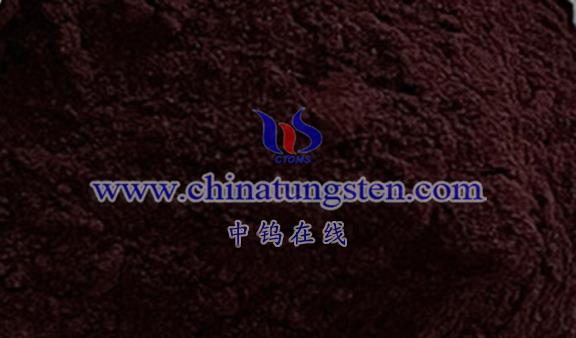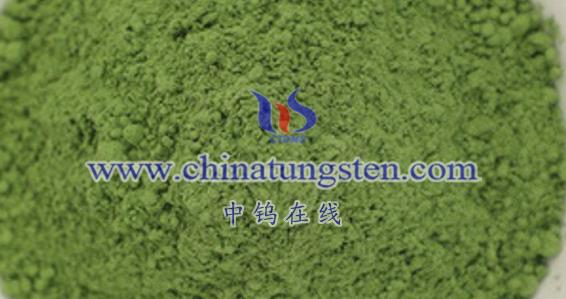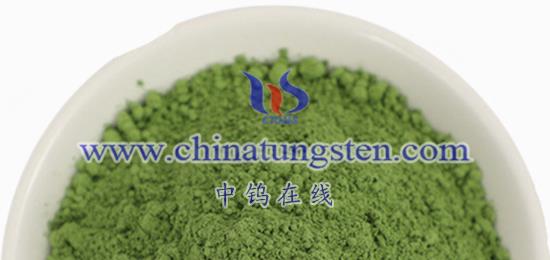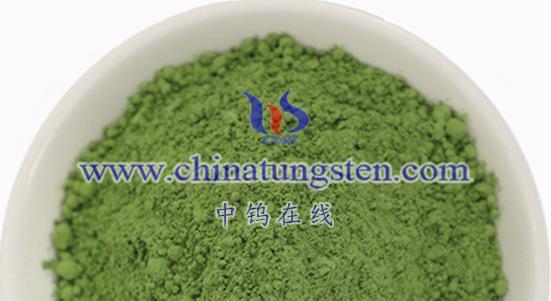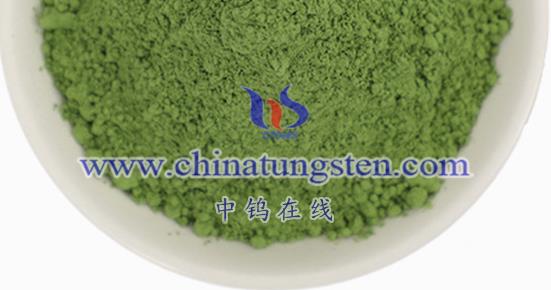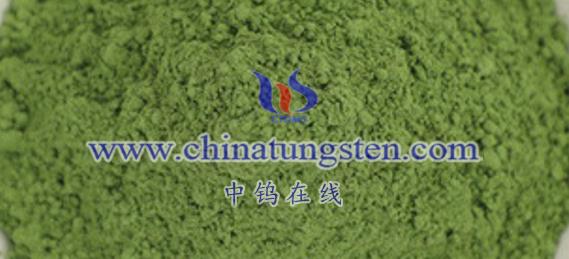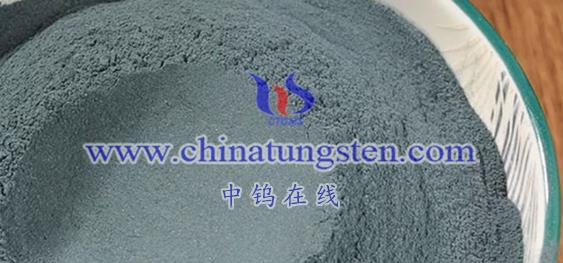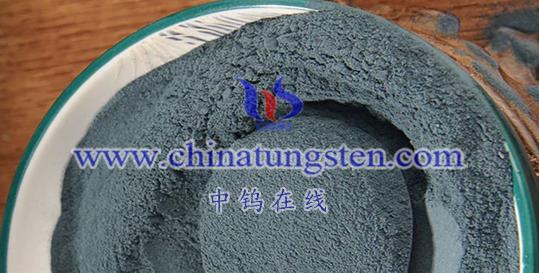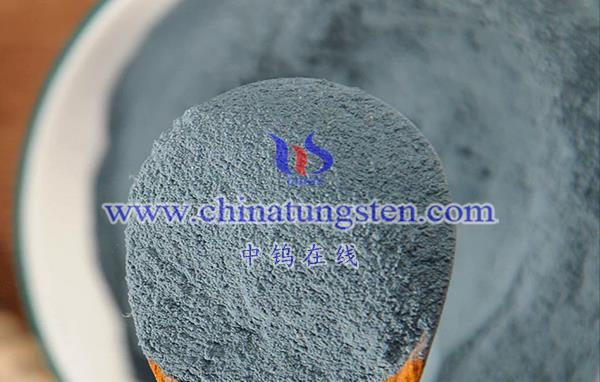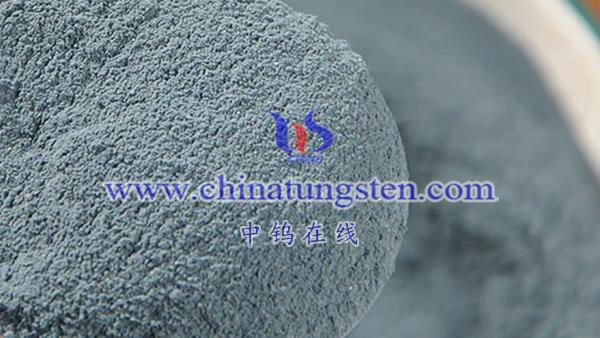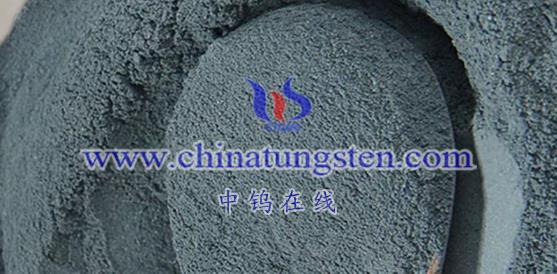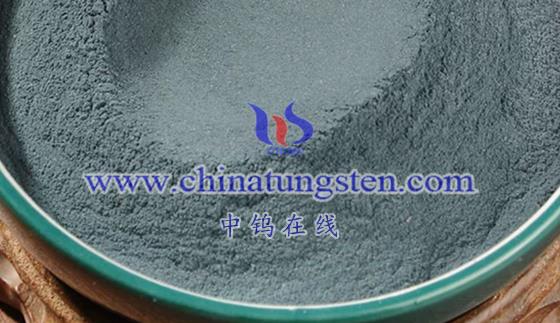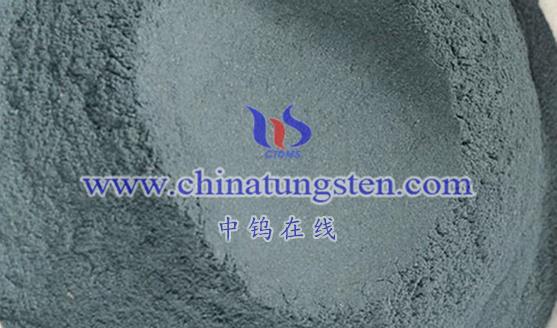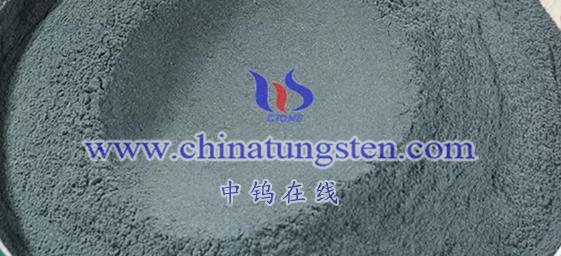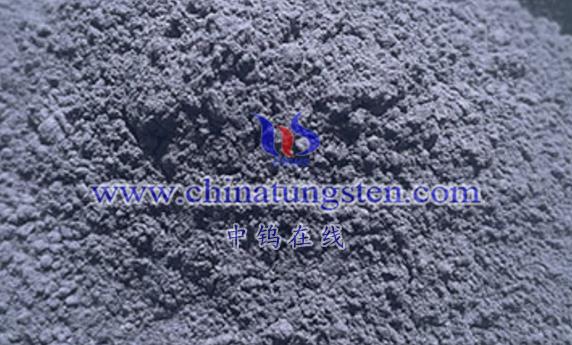
Tungsten bronze is a type of non-stoichiometric tungsten-based compound represented by the chemical formula MxWO3M_xWO_3MxWO3 or Mx(x)WO3−y+z⋅x/2M_x(x)WO_{3-y+z cdot x/2}Mx(x)WO3−y+z⋅x/2, where MMM is a cation, yyy and xxx affect its physical and chemical properties. For instance, when x<0.3x < 0.3x<0.3, it behaves as a semiconductor, and when x>0.3x > 0.3x>0.3, it transitions to a conductor with metallic bonding.
- Physical Properties of Tungsten Bronze
Color
The color of tungsten bronze varies based on the type of MMM and the value of xxx. For example:
- When MMM is sodium (NaNaNa), NaxWO3Na_xWO_3NaxWO3 changes color from golden yellow to light gray-blue as xxx decreases.
- When MMM is cesium (CsCsCs), Cs0.33WO3Cs_{0.33}WO_3Cs0.33WO3 appears blue-black.
Crystal Structure
Tungsten bronze exhibits two main crystal structures: tetragonal and orthorhombic.
- Tetragonal tungsten bronze (TTB): The unit cell contains 10 [BO₆] oxygen octahedra connected at the corners along the c-axis.
- Orthorhombic tungsten bronze: Derived from further distortion along the diagonal of the tetragonal unit cell.
Density and Hardness
Tungsten bronze generally has high density and hardness, making it suitable for applications requiring resistance to pressure and wear.
- Chemical Properties of Tungsten Bronze
Stability
Tungsten bronze is relatively stable at room temperature, insoluble in water and most acids (except hydrofluoric acid), but soluble in alkaline solutions.
Electrical Properties
The electrical conductivity of tungsten bronze depends on the value of xxx:
- x<0.3x < 0.3x<0.3: Behaves as a semiconductor.
- x>0.3x > 0.3x>0.3: Becomes a conductor with metallic bonding.
It also exhibits electrochromism, where its color and conductivity change under an applied voltage.
Reactivity
Although stable under normal conditions, tungsten bronze can react under specific conditions:
- It reduces silver nitrate in aqueous ammonia to metallic silver.
- It oxidizes to form tungstate salts (WO42−WO_4^{2-}WO42−) in the presence of alkali.
- Applications of Tungsten Bronze
Energy Storage
Due to its excellent electrical properties, tungsten bronze is used in the development of energy storage materials.
Coatings and Films
Specific tungsten bronzes, such as blue-black Cs0.33WO3Cs_{0.33}WO_3Cs0.33WO3, are used in heat-insulating coatings and window films for their infrared absorption properties.
Petrochemical Catalysis
Tungsten bronze serves as a catalyst in chemical reactions within the petrochemical industry.
Other Applications
- Used as an anode material for batteries.
- Incorporated into smart glasses and electrochromic devices.
- Synthesis of Tungsten Bronze
Various methods are used to synthesize tungsten bronze, including:
- Hydrogen Reduction
- Electrolytic Reduction
- Vapor Deposition
- Solid-State Reaction
- Fusion Method
Example Syntheses:
- NaWO3NaWO_3NaWO3: Prepared by reducing a mixture of sodium tungstate and tungsten trioxide under heat.
- NH4WO3NH_4WO_3NH4WO3: Can be synthesized using wet chemical, thermal reduction, or thermal decomposition methods.
- Cs0.33WO3Cs_{0.33}WO_3Cs0.33WO3: Produced via techniques like citric acid-assisted hydrothermal synthesis or solvent-based solvothermal methods.
Conclusion
Tungsten bronze is a unique class of non-stoichiometric tungsten compounds with a wide range of physical and chemical properties. These properties make it highly valuable in areas such as energy storage, coatings, catalysis, and electrochromic devices. With ongoing advancements in science and technology, research into tungsten bronze is expected to deepen, unlocking new potential applications.
More details of tungsten oxide product, please visit website: tungsten-oxide.com
Please contact CHINATUNGSTEN for inquiry and order of tungsten oxide:
Email: sales@chinatungsten.com
Tel.: 86 592 5129595
